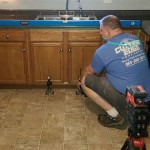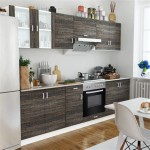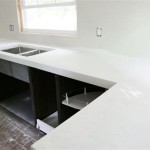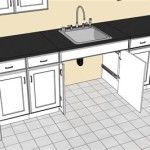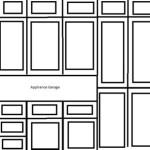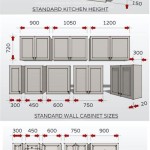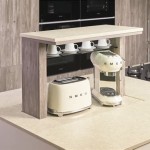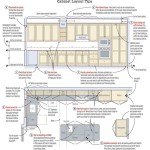Kitchen Cabinet Hardware: A Detailed Look at Hinges
Kitchen cabinets form the functional and aesthetic backbone of any kitchen. While the cabinet boxes provide storage space, and the doors determine the visual appeal, the hinges are the unsung heroes that allow the doors to swing open and closed smoothly and reliably. Choosing the right hinges is crucial for the longevity, functionality, and overall user experience of kitchen cabinets. A comprehensive understanding of the different types of hinges available, their features, and their applications is therefore essential for homeowners, kitchen designers, and cabinet makers alike.
Hinges may seem like a small detail, but they play a significant role in the overall quality and performance of kitchen cabinets. Poorly chosen or improperly installed hinges can lead to a host of problems, including sagging doors, uneven gaps, and difficulty in opening and closing. Conversely, well-chosen and properly installed hinges can ensure that cabinet doors operate smoothly and quietly for many years, contributing to a more enjoyable and functional kitchen space. This article will explore the various types of kitchen cabinet hinges, their benefits, and considerations for selection.
Types of Kitchen Cabinet Hinges
The world of kitchen cabinet hinges is diverse, with numerous types designed for specific applications and aesthetic preferences. Understanding the distinctions between these hinge types is paramount for making informed decisions during kitchen renovation or new construction projects.
1. Concealed Hinges (European Hinges): Concealed hinges, often referred to as European hinges, are the most prevalent type of hinge used in modern kitchen cabinets. The defining characteristic of these hinges is their invisibility when the cabinet door is closed. They are mounted on the inside of the cabinet frame and door, leaving a clean and seamless appearance. These hinges usually allow for adjustability in multiple directions, allowing for precise alignment of cabinet doors after installation. Concealed hinges come in a variety of opening angles, ranging from 95 degrees to 170 degrees. They are typically made from steel or a zinc alloy and are known for their durability and smooth operation.
Concealed hinges are further categorized based on their cup size (the diameter of the hole required in the cabinet door) and their overlay. Overlay refers to the amount that the cabinet door overlaps the cabinet frame. Common overlay types include full overlay, half overlay, and inset. Full overlay hinges are used when the door completely covers the cabinet frame. Half overlay hinges are used when two doors share a center stile. Inset hinges are used when the door sits flush with the cabinet frame. Proper selection of the overlay type is critical to ensure that the doors align correctly and operate smoothly.
2. Face Frame Hinges: Face frame hinges are designed specifically for cabinets with a face frame – a wooden frame attached to the front of the cabinet box. These hinges attach directly to the face frame and the inside of the cabinet door. Unlike concealed hinges, face frame hinges are partially visible when the cabinet door is closed, although some concealed face frame hinges are available. They come in various styles, including non-mortise hinges, wrap-around hinges, and self-closing hinges.
Non-mortise hinges are surface-mounted, meaning they do not require any mortising (cutting a recess) into the cabinet frame or door. This makes them relatively easy to install. Wrap-around hinges wrap around the edge of the face frame, providing a more secure and stable attachment. Self-closing hinges have a spring mechanism that automatically closes the cabinet door when it is within a certain distance of the frame. Face frame hinges are generally less adjustable than concealed hinges, but they are a popular choice for traditional kitchen styles.
3. Butt Hinges: Butt hinges are a classic type of hinge that has been used for centuries. They consist of two rectangular leaves that are joined by a pin. One leaf is mortised into the cabinet door, and the other leaf is mortised into the cabinet frame. When the door is closed, the leaves are flush with the surfaces of the door and frame. Butt hinges are partially visible when the door is closed. They are available in a variety of sizes and finishes, and they can be used for both face frame and frameless cabinets, although they are more commonly used on face frame cabinets. Installation requires precise mortising, which can be challenging for DIY enthusiasts. However, the result is a strong and durable hinge that can last for many years.
4. Pivot Hinges: Pivot hinges are used for frameless cabinets where the door pivots on a point at the top and bottom edges. These hinges are typically used for doors that swing open 180 degrees or more. They are also commonly used for taller, heavier doors, as they distribute the weight more evenly than other types of hinges. Pivot hinges are completely concealed when the door is closed, providing a clean and minimalist aesthetic. They require precise installation and are typically used in more contemporary kitchen designs.
5. Specialty Hinges: In addition to the standard hinge types, there are also a variety of specialty hinges designed for specific applications. These include bi-fold hinges (for bi-fold cabinet doors), soft-close hinges (for preventing slamming), and lift-up hinges (for overhead cabinets). Selecting the correct specialty hinge can significantly improve the functionality and convenience of kitchen cabinets.
Factors to Consider When Choosing Kitchen Cabinet Hinges
Selecting the appropriate kitchen cabinet hinges requires careful consideration of several factors, ranging from the cabinet construction type to the desired aesthetic. Overlooking these considerations can lead to functional shortcomings or compatibility issues.
1. Cabinet Construction: The type of cabinet construction is the most critical factor in determining which type of hinge to use. Face frame cabinets require face frame hinges, while frameless cabinets typically use concealed hinges or pivot hinges. Attempting to use the wrong type of hinge can result in improper fit and function. Therefore, understanding the cabinet construction is the starting point for hinge selection.
2. Overlay Type: For concealed hinges, the overlay type is crucial. The overlay refers to the amount that the cabinet door overlaps the cabinet frame. Full overlay hinges are used when the door completely covers the frame, half overlay hinges are used when two doors share a center stile, and inset hinges are used when the door sits flush with the frame. Selecting the correct overlay type ensures that the doors align properly and create a uniform appearance. Incorrect overlay selection can result in gaps between doors or doors that do not close properly.
3. Door Weight and Size: The weight and size of the cabinet door influence the type and number of hinges required. Heavier doors require stronger hinges and may need more than two hinges to distribute the weight evenly. Large or tall doors may also benefit from using pivot hinges or specialty hinges designed for heavy loads. Failure to account for door weight and size can lead to hinge failure and sagging doors.
4. Opening Angle: The desired opening angle of the cabinet door is another important consideration. Concealed hinges are available in a range of opening angles, typically from 95 degrees to 170 degrees. The choice of opening angle depends on the layout of the kitchen and the desired accessibility of the cabinet interior. Wider opening angles are often preferred for corner cabinets or cabinets located in tight spaces.
5. Soft-Close Feature: Soft-close hinges are increasingly popular for their ability to prevent cabinet doors from slamming shut. These hinges have a built-in mechanism that gently and quietly closes the door, reducing noise and preventing damage to the cabinet frame. Soft-close hinges are available for both concealed and face frame cabinets and are a worthwhile investment for enhancing the user experience and extending the lifespan of the cabinets.
6. Aesthetics: The aesthetic of the kitchen is also a factor to consider when choosing hinges. While concealed hinges offer a clean and minimalist look, face frame hinges can add a touch of traditional charm. Butt hinges are often used in vintage-inspired kitchens, while pivot hinges are suitable for contemporary designs. The finish of the hinges should also complement the hardware and overall style of the kitchen.
7. Adjustability: Adjustability is a desirable feature in kitchen cabinet hinges. Adjustable hinges allow for fine-tuning the alignment of the doors after installation. Concealed hinges typically offer the most adjustability, with screws that allow for movement in three dimensions: up/down, left/right, and in/out. This adjustability can be invaluable for achieving a professional-looking installation and correcting any minor imperfections in the cabinet construction.
Installation and Maintenance
Proper installation and maintenance are crucial for ensuring the long-term performance and reliability of kitchen cabinet hinges. Even the highest quality hinges can fail prematurely if they are not installed correctly or if they are neglected over time.
1. Installation: Hinge installation requires precision and attention to detail. Whether using concealed hinges, face frame hinges, or butt hinges, it is essential to follow the manufacturer's instructions carefully. Proper alignment of the hinges is critical for smooth operation and preventing binding. For concealed hinges, accurate drilling of the cup holes in the cabinet doors is essential. For butt hinges, precise mortising is required to ensure that the leaves sit flush with the surfaces of the door and frame. Using the appropriate tools and techniques will result in a more professional and durable installation.
2. Adjustment: After installation, it is important to adjust the hinges to ensure that the doors are properly aligned. Concealed hinges typically offer multiple adjustment points, allowing for fine-tuning of the door position. Use a screwdriver to adjust the screws until the doors are aligned and operate smoothly. Check for any gaps between doors or doors that rub against the cabinet frame. Minor adjustments can make a significant difference in the overall appearance and functionality of the cabinets.
3. Lubrication: Over time, cabinet hinges may become stiff or squeaky due to friction and wear. Applying a small amount of lubricant to the hinge pin and moving parts can help to restore smooth operation. Use a lubricant specifically designed for hinges, such as silicone spray or a light machine oil. Avoid using heavy greases or oils, as these can attract dust and dirt. Regular lubrication can extend the lifespan of the hinges and prevent premature failure.
4. Tightening Screws: Loose screws are a common cause of hinge problems. Regularly check the screws that secure the hinges to the cabinet door and frame, and tighten them as needed. Be careful not to overtighten the screws, as this can strip the threads. If the screw holes are stripped, use a toothpick or small wooden dowel and wood glue to fill the holes before re-installing the screws.
5. Cleaning: Keep the hinges clean and free from dust and dirt. Use a soft cloth to wipe down the hinges periodically. Avoid using abrasive cleaners or solvents, as these can damage the finish. A clean hinge will operate more smoothly and last longer. For hinges in kitchens with high humidity, consider using hinges with a rust-resistant finish.

Liberty Antique Brass Self Closing Overlay Cabinet Hinge 1 Pair H0103bc Ab O3 The Home Depot

Hickory Hardware 3 8 In Inset Satin Nickel Self Closing Hinge 2 Pack P243 Sn The Home Depot

Concealed Hinge Salice Overlay Hinges Thin Door Full Tmhardware Com

Overlay Soft Close 6 Way Compact Concealed Hinges For Kitchen Cabinets Com

2 Pieces 135 Degree Corner Cabinet Door Hinge Kitchen Bathroom

Hickory Hardware 4 1 2 In X Bright Nickel Frameless 105 Degree Opening Euro Full Overlay Hinge P5107 14 The Home Depot

Goldenwarm 1 2 Overlay Variable Self Closing Kitchen Cabinet Hinges Satin Brushed Nickel Door

Renovators Supply Cabinet Hinge 3 5 Black Wrought Iron H W 1 4 Offset Rust Resistant For Kitchen Cabinets Hardware Pack Of 2 Com

1 2 Overlay Self Closing Kitchen Cabinet Hinges Hardware Matte Black

165 Angle Concealed Hinge Cabinet Hardware 1 Pair Door W Mounting Pl Amerfit
Related Posts

